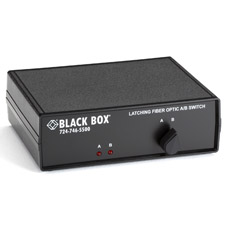Unlike conventional electronic switches, these switches are not complex devices with vulnerable circuits that you need to closely monitor and protect from intrusion, component failure, or interference.
Even without the complexity, they’re reliable in mission-critical environments. Their jewel-like micro-mirrors are bonded to precise positioning servos, controlling the reflections of the optical data beams. Data passes through, maintaining optical communications even when power is removed. The “latching” versions latch mirror movement mechanically into a selected position and hold it there without the need for continuous electrical power.
The A/B switch has unique loopback capabilities. Using loopbacks, you can verify the integrity of your backup fiber link while still connected to your primary fiber link. This is especially useful in failover applications where you want to continuously test the “unused” circuit to ensure that it’s available if needed.
Filed under: IT Infrastructure | Tagged: electronic switch, Fiber Optic, Switches | 1 Comment »






